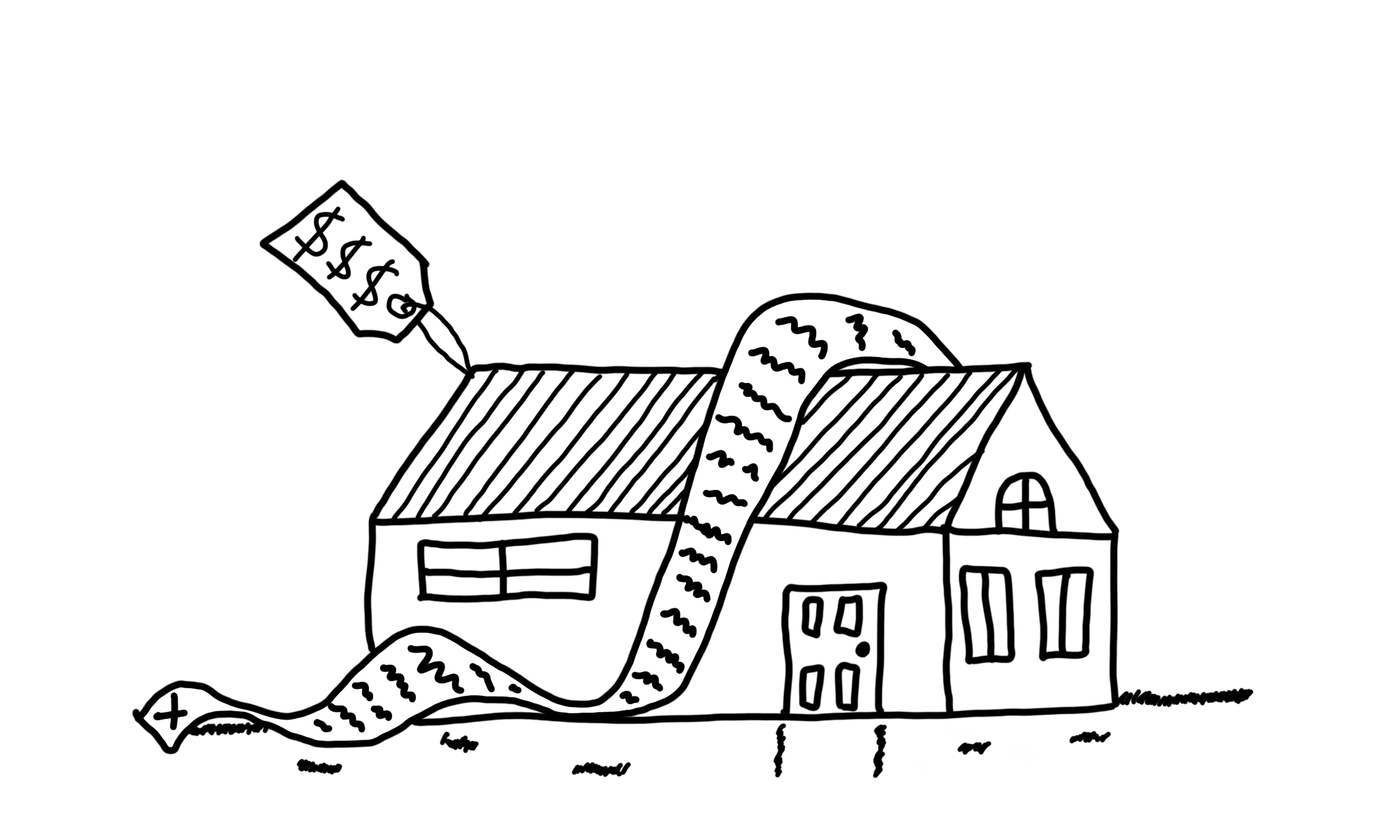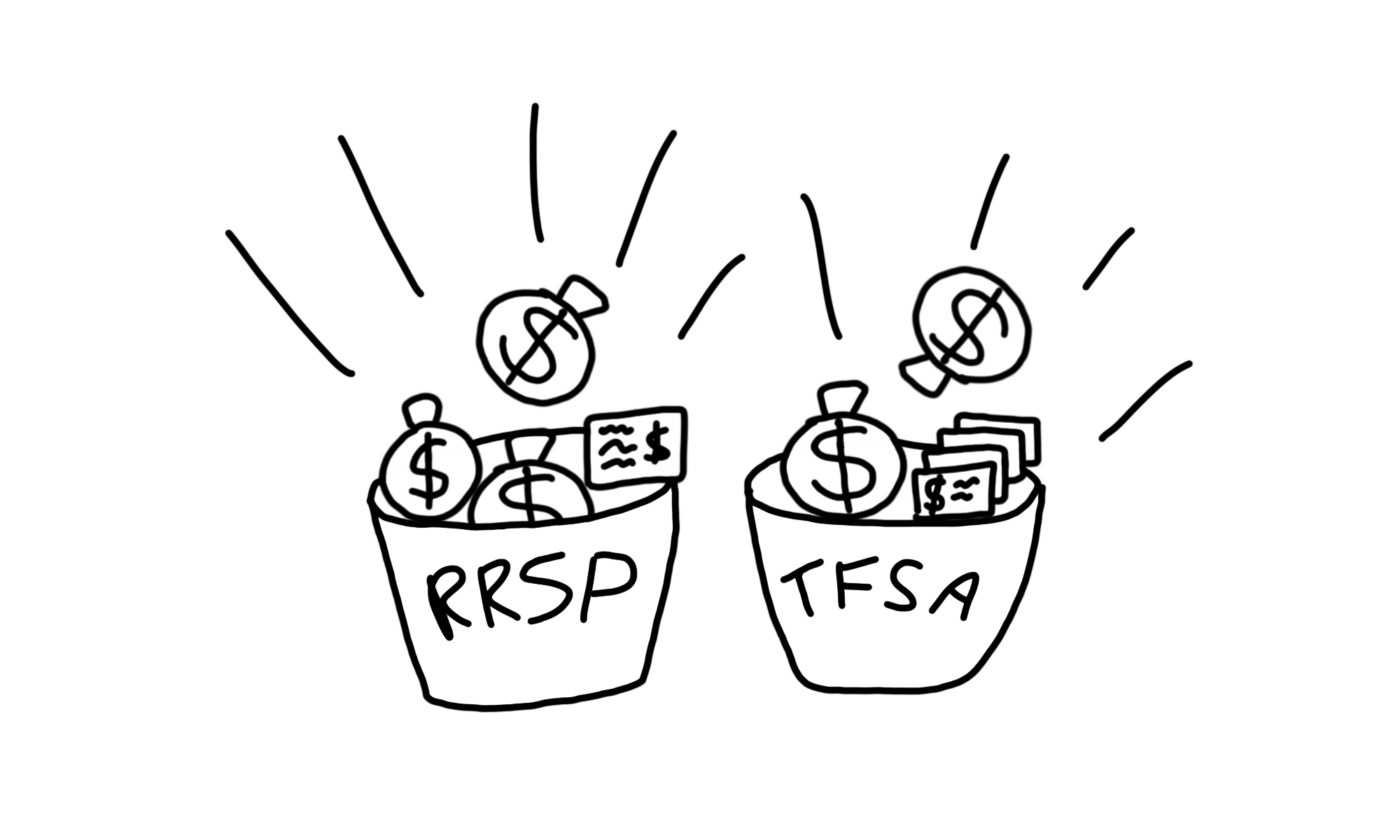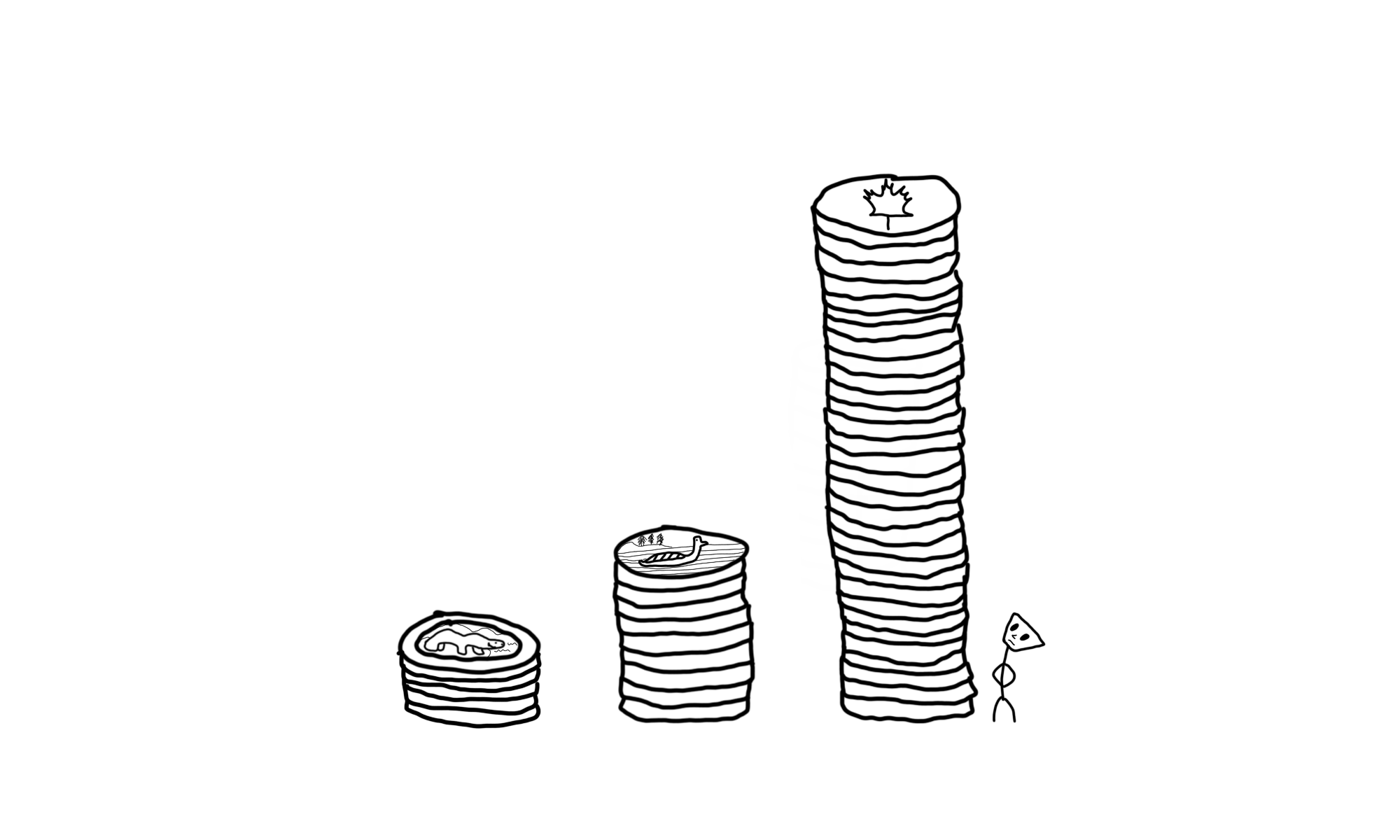Contents:
Home ownership is an important goal for many adults as they progress through their life and start saving for a house down payment (cash portion of the purchase price) in order to amass as much money as they can. These savings (while an amazing accomplishment) are probably not nearly enough to purchase a home outright (especially in areas like the Greater Toronto or Greater Vancouver areas). If their down payment constitutes only 10% of the price of a home they desire, where does the other 90% come from? If you’ve read the title, you’ll probably have guessed that it comes from a mortgage.
What is a mortgage?
A mortgage is a loan given to someone who wants to buy a real estate property (detached house, condo, townhouse, etc.). The mortgagor (person who gets the mortgage – the borrower) agrees to pay it back to the mortgagee (one who gives the mortgage – the lender) on a regular schedule with interest based on a rate agreed upon by both parties. The property being purchased with the mortgage is used as collateral for the loan. Collateral is an asset that secures or “backs” the mortgage for a lender and can be taken and sold by them if the borrower can no longer pay back the mortgage (known as defaulting on the loan).
Components of a Mortgage
A mortgage shares the same basic components of any loan: a loan amount, an interest rate, and terms for repayment. It also includes an additional component, the amortization period. Let’s take a look at each of them.
Amortization
Amortization in this context is the process of spreading out mortgage payments over a certain length of time (known as the amortization period). Measured in years, a longer amortization period means lower payments but for a longer period of time.
A mortgage of $500,000 (including principal and interest) amortized over 25 years will have payments of $1,666.67 per month: $500,000 ÷ (25 years × 12 months) = $1,666.67.
The same mortgage over 30 years will have payments of $1,388.89 per month: $500,000 ÷ (30 years × 12 months) = $1,388.89.
Payment Blend
Each mortgage payment includes money to cover both the repayment of the principal (the initial loan amount) and the interest charged. The first payment will have the lowest amount of principal repaid and the highest amount of interest paid compared to every other payment in the amortization schedule (table showing payments and the amount of principal/interest attributed in each payment). Each subsequent payment will gradually increase the amount going to principal repayment and decrease the amount going to interest while keeping the actual payment amount the same.
The first and last 5 months of an amortization schedule for a mortgage of $500,000 with a 2% interest rate, a 25 year amortization period, and monthly payments is below (notice how the principal and interest portions change while the payment amount stays the same):
| Payment Number | Total Payment Amount | Principal Portion of Payment | Interest Portion of Payment |
|---|---|---|---|
| 1 | $2,117.26 | $1,287.37 | $829.88 |
| 2 | $2,117.26 | $1,289.51 | $827.75 |
| 3 | $2,117.26 | $1,291.65 | $825.61 |
| 4 | $2,117.26 | $1,293.79 | $823.46 |
| 5 | $2,117.26 | $1,295.94 | $821.31 |
| … | … | … | … |
| 296 | $2,117.26 | $2,099.77 | $17.48 |
| 297 | $2,117.26 | $2,103.26 | $14.00 |
| 298 | $2,117.26 | $2,106.75 | $10.51 |
| 299 | $2,117.26 | $2,110.25 | $7.01 |
| 300 | $2,117.26 | $2,113.75 | $3.51 |
Mortgage Term
The mortgage term is the amount of time you agree to commit to a lender and their mortgage contract. If you’ve ever looked up mortgages, the term is anywhere from 1 to 5 years and usually features the type of interest rate (e.g. 5 year fixed rate or 2 year variable rate).
It’s important to note that even though your amortization period is over 25 or more years, the mortgage term is only a fraction of that. The amortization is used as a way to calculate the payment ratio (principal and interest per payment) for the term but the amortization schedule shows values as if the mortgage term is the same as the amortization.
At the end of the mortgage term, the loan technically needs to be paid but in most cases a refinance of the mortgage is done. This means you agree to a new mortgage contract (with the same or different lender) with the remaining amount from the original loan acting as the initial principal for the new mortgage.
You get a 5 year fixed mortgage with SuperLender for $500,000 at 2%. At the end of those 5 years, you noticed that you’ve paid $81,000 of the original $500,000 (and $46,000 in interest). Since you want to stay in the house you bought, you refinance the mortgage with SuperLender and get a new 5 year fixed mortgage for $419,000 ($500,000 - $81,000 principal paid from previous mortgage) at their new fixed interest rate of 1.86%.
Interest Rates
The interest rate on a mortgage is how much the lender charges you for use of their money. It is compounded, which means at a set period of time (twice a year in Canada for fixed rate mortgages) interest is calculated on the original loan amount (principal) as well as any interest accumulated already – interest on interest. In this way, the loan amount increases every time interest compounds as the calculated interest gets added to the total amount owed to the lender (this is all calculated beforehand in the amortization schedule).
Fixed and Variable Rate
All of the examples so far have been using what’s called a fixed interest rate. This rate stays the same throughout the entirety of the mortgage term which means your payment is always the the same amount. You agree to this rate at the beginning of the mortgage and it only changes once the term is complete and a new mortgage is created, such as with a refinancing.
Conversely there’s also a variable (or adjustable) interest rate. This rate is connected to the overnight lending rate, officially known as the Policy Interest Rate in Canada and the Federal Funds Rate in the US. This is basically the rate that banks and financial institutions use when lending money amongst themselves for a day (or “overnight”). The Bank of Canada sets the target for this overnight rate and it acts as the lowest interest rate available in the market. Lenders use this overnight rate in their calculation of the variable rates they offer.
You’ll generally see rates like [prime + X.X%] or [prime − X.X%] when looking up variable rate mortgages. The prime rate here is closely tied to the overnight rate (though it’s not exactly the same): when the overnight rate rises so too does the prime rate and when it drops, the prime rate follows. This is what makes the variable interest rate vary.
All of this means that with a variable rate mortgage your payments will change when the overnight rate (and prime rate) does. Increasing when it goes up and decreasing when it goes down. You can test it out with a tool like this.
A fixed interest rate mortgage means consist payment amounts for the length of the term while a variable rate one mean payments can fluctuate up or down.
Mortgage Comparison
With all of the different components making up a mortgage, it can be difficult to figure out which one will work best for your situation. Components like the interest rate are fairly easy to gauge (the lower the better) but others are a bit more nuanced and require more consideration.
The comparisons below under each heading are for the one component being compared and assume everything else in that comparison remains unchanged (e.g. payment frequency comparisons assume the amortization, interest rate, etc. remain the same in each payment option).
If you’d like to try it out for yourself, you can check out this mortgage calculator (from the Government of Canada) or this one (from Ratehub – a site for comparing Canadian rates).
Payment Frequency
| Payment Frequency | Number of Payments per Year | Calculation | Payment Example | Total Paid Annually |
|---|---|---|---|---|
| Monthly | 12 | Monthly payment |
$1,500 | $18,000 |
| Bi-weekly | 26 | Monthly payment * 12 / 26 |
approx. $692.31 | $18,000 |
| Accelerated bi-weekly | 26 | Monthly payment / 2 |
$750 | $19,500 |
| Weekly | 52 | Monthly payment * 12 / 52 |
approx. $346.15 | $18,000 |
| Accelerated weekly | 52 | Monthly payment / 4 |
$375 | $19,500 |
The accelerated payment options above allow you to pay down your mortgage quicker at the same frequency and are equivalent to one additional monthly payment per year compared to the non-accelerated ones.
When deciding on a payment frequency consider the accelerated options if you can afford them as they can drastically cut down the amount of interest paid over the life of your mortgage. Otherwise it generally makes sense to line up the payment frequency with how often you get paid from your job. Simpler, easy to remember, and helps when budgeting.
Length of Amortization
A longer amortization means smaller payments while a shorter one means larger payments. However, a longer amortization also means you’ll be paying more interest over the life of the mortgage. For a 5 year fixed rate, $500,000 mortgage with monthly payments:
| Initial Loan Amount | Amortization | Monthly Payment | Total Interest Paid (entire amortization period) |
|---|---|---|---|
| $500,000 | 20 years | $2,527.46 | $106,589.39 |
| $500,000 | 25 years | $2,117.26 | $135,176.82 |
| $500,000 | 30 years | $1,846.03 | $164,569.75 |
Paying less interest is desirable but consider how the payments fit into your monthly budget. Higher payments will reduce the interest paid overall but at the cost of reducing the amount of money you’ll have left to spend on other expenses each month. If you have a lot of other debts or expenses to pay off as well, consider a longer amortization and then revisit the option of a shorter amortization when you refinance your mortgage.
Interest Rate Type
Variable interest rates on mortgages tend to be less than fixed rates for the same term period (5 year variable vs 5 year fixed) but there have been a few times when this hasn’t been true (look for when the prime rate was higher than the conventional rate).
From a purely lowest interest rate perspective, this would make them the obvious choice of the two – if the overnight and prime rates decline over the term of your mortgage, you get lower payments but their variability can also bring additional risk and higher payments if they rise.
Higher risk, higher (potential) reward. No one knows what will happen in the future but lots of people make guesses about it (some educated guesses even). If you have a higher tolerance for risk and could handle an increase in your mortgage payment, then a variable interest rate may be for you. Plan for the worst by stress-testing (calculating) your budget with a higher payment than the one at the current rate, and hope for the best. You may very well be rewarded with declining rates and more money in your pocket (or bank account).
If you have a lot of other debts or expenses to pay off as well and your money is allocated precisely each month with very little leftover or the potential (and possibly permanent) increase in payments is too risky for you, consider a fixed rate mortgage. A stable payment will bring peace of mind and allow you to focus on other important areas of your finances (and life).
Prepayment Options
A mortgage prepayment is an additional payment made on your mortgage where the entire amount is put towards repayment of the principal. Depending on the terms of your mortgage agreement, prepayments could take the form of lump sum payments or additional payments that align with your payment frequency (sometimes referred to as “double up” payments).
Lump sum prepayments are large and usually capped at a percentage (e.g. 10-20%) of your initial mortgage amount per year while additional individual payments (at your regular payment frequency) are capped at either a fixed amount or your regular mortgage payment amount.
Your fixed rate mortgage of $500,000 at a rate of 2% with a 25 year amortization has monthly payments of $2,117.26. Your lender allows prepayments of 20% annually via lump sum and additional payments up to your regular payment of $2,117.26 (taken at your regular payment frequency in addition to the regular payment).
This means you can prepay $100,000 of your initial mortgage amount every year ($500,000 × 20%) via lump sum payments including up to 12 extra payments of $2,117.26 and have all of those amounts go towards just principal repayment.
Prepayment options are great if you have the extra money (or come into some extra cash) to make them as they reduce the amortization of your mortgage as well as the total amount of interest you’ll have to pay over the term. They will not change your mortgage payment amount but will affect the ratio of principal to interest of subsequent payments (increasing the amount going towards principal and decreasing the amount towards interest).
When comparing mortgages, ones with prepayment options are not necessarily “better” than those without them but they offer you the flexibility to pay down your mortgage quicker if you choose – don’t choose a mortgage just on the basis of whether it has prepayment options, compare the interest rate and other components.
One strategy enabled by the option of prepayment is getting a mortgage with lower payments that you can comfortably manage (e.g. a payment of $900 if you budgeted $1,200 for a mortgage) and use the difference for additional prepayments. The reason being that this gives you a buffer in case an unexpected expense arises without forcing you to take away budgeted money from somewhere else. This is more of a planning strategy than a financial one (it may result in more interest being paid over the term) but the added peace of mind may be worthwhile to you.
Bringing It All Together
There are a lot of components that make up a mortgage as outlined above. It’s important to recognize that everyone’s situation is different: income level, current debts, current savings, presence of an emergency fund, type of work situation (full-time vs part-time vs freelance), and living situation (one income or two).
Below are a few general guidelines to help figure out which mortgage might work best for you but use them as a starting point and really consider how they would affect your financial situation and lifestyle.
- the lower the interest rate, the better
- 25 year amortization is a standard recommendation since it offers a balance between payment size and total interest paid compared to 20 year (higher payments, lower total interest paid) and 30 year (lower payments, higher total interest paid) amortizations
- a longer amortization may be worthwhile if your income is sporadic (freelance/gig job) compared to a higher payment from a shorter amortization
- fixed rate mortgages are generally recommended for the payment stability (same payment amount throughout the term)
- variable rate mortgages are usually lower than fixed rate and are great if you think the overnight rate will decline or you have additional cash available each month if rates increase
- if you can afford it, consider accelerated bi-weekly payments as they can save you a lot of interest (also syncs up well if you get paid bi-weekly)
- look for mortgage agreements that offer prepayment options so you have the option to pay your principal down quicker
TL;DR
A mortgage is a loan you agree to undertake when you want to buy a property (real estate). The payments you make towards it are a mix of interest and principal repayment (with every payment the principal portion increases and the interest portion decreases).
The loan includes components of amortization (longer means smaller payments, shorter means higher), term length (how long you’ll make payments according to the amortization schedule before you need to refinance with a new agreement – typically 1-5 years), payment frequency (monthly, bi-weekly, etc.), interest rate (using a compounded calculation), and type of interest rate (fixed means payments stay the same and variable means payments can increase or decrease over time).
Categories
| personal-finance
Tags
| mortgage




